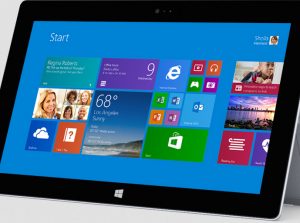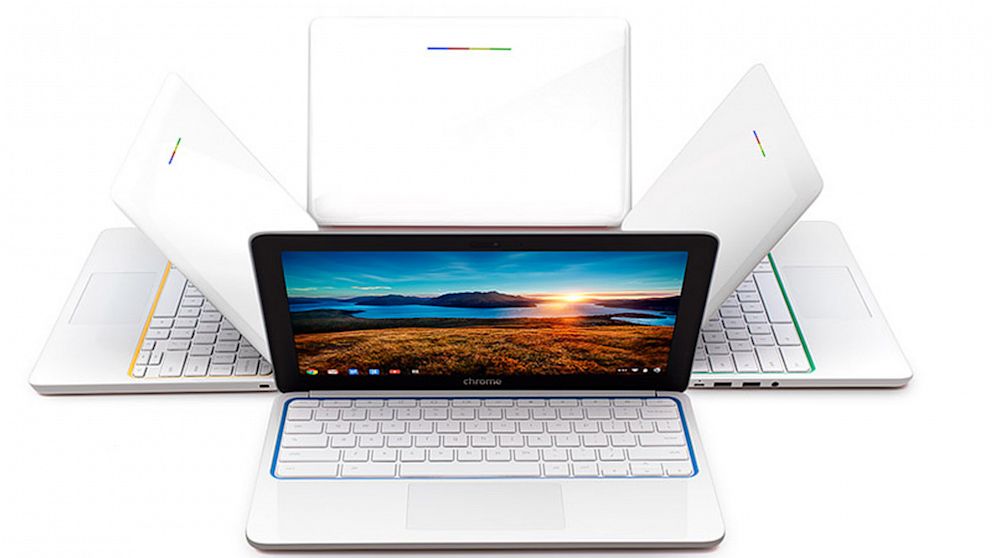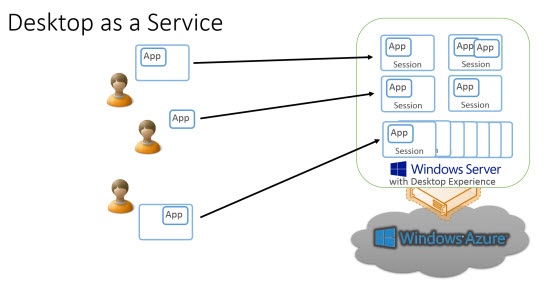6 reasons why Windows RT is the real future of Windows
 The standard fare of tech industry pundits just don't get it when it comes to Windows RT. They lambasted it when it came out in 2012 (in some ways, rightfully so). They doubted Microsoft would release a Surface 2 variant, and Redmond did just that. And they continue to beat the anti-RT drum loud and clear, using RT device sales figures as their proof of a pending death notice.
The standard fare of tech industry pundits just don't get it when it comes to Windows RT. They lambasted it when it came out in 2012 (in some ways, rightfully so). They doubted Microsoft would release a Surface 2 variant, and Redmond did just that. And they continue to beat the anti-RT drum loud and clear, using RT device sales figures as their proof of a pending death notice.
Perusing Google, you can come across a wild variety of articles that purport to explain why Microsoft needs to ditch RT altogether. Chris Neiger penned one such piece, and even John Martellaro of MacObserver.com did his best to argue how foolish Microsoft was for even considering RT a serious contender.
I've always held Windows RT in a slightly different light. Not only have I argued that Windows RT is here to stay for numerous concrete reasons, but I outlined publicly how well RT tablets are working out for clients of mine as traditional x86 replacements. That customer rollout I highlighted in the aforementioned article is doing so well, in fact, that the only calls we are getting now are for menial support requests like password resets and spare power cords. Can you say it just works?
In light of all the RT critique out there, today I was pleasantly surprised when my RSS feeds came up with an article from Rod Trent of WindowsITPro.com. It's a wonderful read, and one that I heavily agree with naturally, but he boils it down to this: Windows 9 is going to be more of a Windows RT than Windows 8 was, and Modern UI will only become a larger part of the core experience.
Unlike many of the tech analysts that make a living observing this wild industry from the outside, my rationale is formed by what I am noticing in the field as a consultant. Wall Street may live and die by financial performance figures, but the tech world isn't easy to predict on that basis alone.
As I mentioned in my article on why Windows RT is here to stay, I pointed out that Microsoft rode on large $3 Billion in losses for the Xbox consoles for almost a full decade.
It paid off in the end, as Xbox 360 stood as the best selling console in the USA up against the PS3 for nearly 2.5 years straight. While Xbox One is getting off to a slower start than the PS4 initially (likely due to its $100 higher price tag) I think the competition will equalize as Microsoft continues to unleash living room-friendly features for households and bring the Xbox One price point down over time.
And now Google seems to be on the same course, busily converting its niche Chromebook line into a full fledged case study for what netbooks should have been back in 2006. After years of dogging it in the market, Gartner is predicting a 160 percent surge in Chromebook sales for 2014 -- and some are even saying that this is a conservative figure. So much for the idea that everyone wants full Windows or MAC OSX.
Since people like Rod Trent and I clearly seem to be in the vocal minority, perhaps outlining some of the "writing on the wall" may be helpful.
#6: Windows Phone and RT Will Merge, And Only One Direction Makes Sense
It's already clear from leaks that Microsoft is going to be unifying its application bases between Windows Phone apps and Windows Store apps. The bigger point here leads into what Julie Larson-Green of Microsoft told us a few months back: “We have the phone OS, we have Windows RT, and we have full Windows. We are not going to have three.”
She was absolutely correct. There's little reason for Microsoft to keep supporting three distinct platforms. In fact, I'll go so far as to say that Microsoft could eventually get away with a single unified "Windows OS" platform that takes over for the consumer desktop and its tablet/phone lines. Risky, but completely possible and plausible if you see what I see unfolding.
A single OS for non-server devices makes complete sense in the long run. The reason I say non-server is because part of my predictions here are formulated around Windows Server keeping to a traditional x86 code base to allow for sustaining a cloud pedestal for backwards compatibility, powered in unison both by Windows Remote Desktop Services and its Azure cloud infrastructure. All of that geeky backbone goodness still lives and breathes on Windows Server -- an x86 world through and through for the foreseeable 15-20 years or more.
But for the short term, Windows RT and Windows Phone will need to merge so development resources are not being exhausted coding for separate ecosystems. Developers are still staying away from the Windows Store platform in many ways for this very reason, and removing this barrier to entry would take away this argument in one fell swoop.
Windows RT is the better half of this duo for numerous reasons.
First, it already has the viability of running tablets quite well judging by the Surface RT/2 and Lumia 2520, to name a few. It also carries the same Modern UI interface for its touch-centric activities, so is familiar with what Microsoft is already pushing in Windows Phone. But this is not the case the other way around -- Windows Phone is missing the Desktop UI that RT brings to the table for multitasking and traditional Office usage. And this will be the keystone that holds the RT advantage together.
Not to mention how RT already has the proper assembly on ARM, which is the benefit that allows it to work on devices where battery life is at a premium for users. The Surface RT and Surface 2 have batteries on par with the iPad, yet provide leagues greater computing functionality for the end user. Intel keeps promising better battery life with each x86 line, but nothing is on par with what I have seen out of Surface RT devices.
Giving developers a common RT backbone to work off of for their tablet and phone apps, similar to how Apple does it with iOS? It only makes sense. Apple has proven its a sustainable model, and Windows RT provides all the critical pieces of the puzzle that tablet users and phone users alike are looking for. Function, finesse, and feasibility.
#5: Chromebooks Proving That a Limited Mobile OS Can Work
My first real dive into Chromebook land was all the way back in late 2011, when the industry was questioning why the heck Google even attempted to create an OS out of a web browser. I was helping a school district out in Missouri roll out their first batch of Chromebooks for a pilot program for students. Education got it, but the rest of the tech world was scratching their heads.
How wrong the skeptics were. After abysmal sales of the Chromebook devices for over two years, Google finally got traction on the devices in 2013 and as we churn into 2014 now, Chromebooks are the hot topic in notebook computing.
Apple's advertising may want you to believe differently, but the numbers show Chromebooks taking up a whopping 21 percent of the US notebook arena now, with Apple at a minimal 4 percent. These cruddy, limited, barebones devices that have only been around for a couple of years are hotter than anything from the fruit company?

Google took a huge risk with a laptop based on an OS more limited than Windows RT in 2011. Turn to 2014, and it's the hottest sector of notebook sales. Early critics of Windows RT are making the same premature judgement. (Image Source: ABCNews)
Even as Windows and MAC laptop sales are dropping, Chromebooks continue rising. “The presumption that desktop Windows is ‘most familiar’ [to users] no longer applies,” claims Jeff Orr from market watching firm ABI Research.
The underlying message that can be extrapolated from these indicators is that RT can succeed as a mobile platform even in light of its inability to run the plethora of millions of Windows apps. As we shift into the cloud and become comfortable with getting work done in a browser or in DaaS environments, a necessity for the unlimited compatibility playground we have been used to is becoming increasingly irrelevant.
The 1.84 million Chromebook purchasers of 2013 let that be known fairly loud and clear.
#4: Desktop-as-a-Service (DaaS) to Become Almost Ubiquitous in 2014
DaaS penetration and market realization is quickly growing, and I've personally been having huge success with it in my own consulting for clients in the last year. We've had nothing but positive results from converting one company off netbooks to Surface RT tablets using Windows RDS DaaS hosted internally, and just this past weekend we replicated the same setup for a HIPAA customer in the south Chicago suburbs.
I tend to love what Microsoft offers first party with RDS (Remote Desktop Services), especially in the Server 2012 R2 release. It's super secure, rock solid in performance, and cuts down endpoint device costs considerably. For the above HIPAA entity I mentioned, we are already planning on replacing office desktops with a full fleet of zero clients on the next machine upgrade cycle. Zero maintenance, super low power consumption, and no endpoint licensing to worry about.
But not everyone happens to be an infrastructure geek like me, and I understand that. While my company tends to be installing these RDS DaaS setups on-premise for customers right now, we are already planning out steps to take this fully into the cloud in 2014 and beyond.
Windows Azure hinted at making this a full fledged reality last year when Microsoft allowed SPLA-licensed hosting companies to offer RDS in their IaaS cloud, but this is still somewhat anti-consumer still since SPLA licensing is not easily acquired or maintained by smaller firms that want to control their own RDS setup on Azure.
It's only a matter of time before this changes, and I'm fully expecting Microsoft to make it as easy to spin up RDS desktops on Azure as it is on Amazon's new WorkSpaces platform. Amazon's pitch is as simple as it gets: no need to worry about RDS CALs, SPLA, or any of that other Microsoft legacy licensing cr*p. You bring the workload, we provide the desktop in the cloud for you.

Microsoft has been tweaking Windows Remote Desktop Services for the better part of the past decade and a half. It's so accurate in recreating a traditional desktop experience that most users barely know they are on Windows Server. Just good development, or preparation for a Windows RT future? (Image Source: WindowsITPro.com)
Not to be outdone, VMWare announced last October that they acquired Desktone, another heavy expert in the hosted DaaS market. It's not quite clear as to what VMWare's intentions are for the service, as they have yet to formally release an offering utilizing the expertise they acquired, but all indicators are leading to a WorkSpaces-esque product.
And so all three of the cloud datacenter giants have some flavors of DaaS already available or coming soon. Google will likely join the fray at some point as well. They wouldn't be investing this heavily in a sector of cloud computing if it didn't have long term potential. And thus they see, as I do, that DaaS is here to stay.
What the heck does DaaS have to do with Windows RT? Quite a lot, actually. As I mentioned, Windows Server is likely to continue down an x86 path for the foreseeable future so Microsoft's RDS functionality can continue offering up the "legacy" Windows experience for clients.
Business customers have been using RDS in some flavor heavily for the past near 15 years, previously under the guide of Terminal Services. You think Microsoft hasn't taken 15 years of lab rat testing in this field seriously? Guess again.
Terminal Services used to be fairly pitiful in its Server 2000 and 2003 forms. Personalization was almost non-existent per user, and the amount of effort that had to go into setup by an administrator was daunting. Microsoft literally had hundred plus page getting started guides for the functionality. Not anymore.
With the advent of User Profile Disks that can provide virtual, dynamically-sized containers for end user profile data, there is little to no difference for a user on RDS compared to a traditional computer setup. Combined with the unlimited power that Group Policy affords, it's my DaaS of choice going forward.
Combined with Azure, Microsoft can easily pursue a Windows RT future on upcoming releases of Windows. Modern UI and Windows Store can power the mainstream, maturing vision for Windows usage, and legacy support can easily be handled through a mixture of on-prem or Azure-driven DaaS in the form of RDS.
The other vestige of a legacy Windows world, Active Directory, has already been proven that it can run in a Windows Azure environment. For businesses that require permissions and device management from ADDS (Active Directory Domain Services) they can easily keep their needs going on Windows Server.
A lack of legacy support on the native endpoint thus becomes almost entirely moot. By the time Windows RT becomes a mainstream consumer offering (perhaps starting with Windows 10, as Windows 9 may be too soon) most app developers will have either already ported options to the Windows Store ecosystem, or be well on their way. That fringe of society in need of definite horsepower or niche legacy apps would opt for spots on a potential DaaS offering on Azure.
Many rumors have already leaked the development of a Project Mohoro, which I honestly think is the effort to make this dream become a reality inside Microsoft.
I personally think there's more than meets the eye with Microsoft's decision to release kosher Remote Desktop apps for Android and iOS last year. If they're going to perpetuate an Azure-driven DaaS future, they figure people might as well have access no matter what endpoints they decide to use. Even if they aren't Windows powered. If you can't win them fully over, Microsoft bets, at least let them in on the ride.
So in light of all this, it begs a question: what is it that Windows RT can't do after all? Nothing that I can think of. A modern app ecosystem via Windows Store, and a clean legacy path that can be scaled up with little effort through RDS. The best of both worlds in my eyes.
#3: Office Online, OneDrive, SharePoint: Eradicating the x86 Desktop
Taken separately, you may view the above trifecta as just natural progression. But as a whole, they represent the silent vision that will bring together a Windows RT future. That push into the cloud will soon become deafening, and the direction and capabilities the above platforms are providing now represent how Microsoft will position an RT-first pitch to the world.
Office Online is the rebranding for the under-advertised Office Web Apps, presumably to bring these offerings front and center next to desktop Office. And their functionality is gaining attention next to Google Docs; and in many ways, leaving Google's offerings lacking in contrast. Give Office Online another 3-5 years, and it will have the development investment that will bring it up to 80 percent+ parity with what desktop Office contains, if not more. I use Office Online quite a bit on the personal and SharePoint side, and have been pleasantly impressed. And I'm a longtime Google Docs user that recently converted.
And if Office Online isn't your thing, you may already know that Microsoft has nearly the entire Office suite already available on Windows RT. Reports from outlets like Neowin also hint that Microsoft is quietly developing the missing rest of the suite for Windows RT for eventual release. So we may not be relegated to Office Online solely after all.

Microsoft surprised everyone when they delivered Outlook 2013 for Surface RT late to the game. But if information from Paul Thurrott is accurate, Microsoft may be preparing the rest of the Office suite for Windows RT after all. Internal builds at Microsoft purportedly already contain OneDrive for Business, Publisher, and all the other lesser apps. A cue to Microsoft's long term intentions? (Image Source: WinSuperSite.com)
OneDrive on the consumer side is quickly becoming the new norm for cloud storage that Microsoft is clearly forcing upon the public in a fairly heavy handed manner. Sign into your Windows 8.1 device with a MS account? You've already got OneDrive access and storage space, and it's caked into your OS whether you like it or not. This tight integration isn't going to decrease if my Microsoft senses are telling me right.
And on the business end, SharePoint Online in Office 365 is replicating what file servers of yesteryear provided with relative ease. Tight permission controls? Expandable storage space? Browser-based and mobile device connectivity with local sync? SharePoint Online can do all that and more for a pretty affordable price each month. For any business that is already paying for numerous Office 365 flavors, they may not even know they have this tool at their disposal out of the box.
We moved our entire company file server over to SharePoint and couldn't be more pleased. We're actively in discussions with numerous other customers to do the same.
If Windows RT took over the future of Windows, these maturing services would represent how 80 percent or more of the populace could store and access their files. For that other 20 percent that needed legacy capabilities, some flavor of DaaS like RDS from on-prem Windows Server or Azure-powered RDS would fill the void.
#2: Windows RT Peripheral Compatibility is Good, And Getting Better
Microsoft has made device compatibility for Windows RT a fairly high priority, and my own tests with the OS have proven this to a great extent. Yes, it doesn't compare to traditional Windows (yet) by a longshot, but it's still leagues better than what Windows Phone or even Android/iOS have to offer.
Any eventual move by Microsoft to have RT take over as the primary desktop and tablet offering on the market will be met with a need to give people the device choices they have grown used to. Windows Phone has never held this as a priority for obvious reasons, but the RT side already has a nice leg up in this regard.
Unifying the Windows Phone and RT ecosystems under RT will afford Microsoft this solid baseline of device driver availability that is only getting better as time moves forward. They would have the backbone for a tablet, laptop, and desktop OS which would be seriously viable by the time it becomes reality.
#1: Features like Split Screen, Modern Apps on Desktop Hint at the Future
A Windows RT future is slowly being hinted at in how Microsoft is treating the duality that Windows 8 affords. With all of the work being put into melding the functionality of both the Modern UI and Desktop modes, we're getting a glimpse for where Windows RT will take over once it becomes the flagship for Redmond.
Take, for example, the recently enhanced split screen functionality in Windows 8.1 that allows for dynamic resizing of Modern UI apps and desktop mode on the fly. Legacy desktop mode will continue to exist in Windows for some time, both as a holdover for traditional users and as a means to access full blown Office apps that RT already provides. Other useful features like Windows Remote Desktop tend to work slightly better in legacy desktop mode still, compared to the "app" version from Windows Store. But that could change with time.
And as Paul Thurrott mentioned back in January, sources are already hinting that Modern UI apps will be capable of being used fully windowed for Desktop Mode by Windows 9. If Microsoft were intent on fully ridding us of Desktop Mode, this definitely isn't the way to show those intentions. If anything, Microsoft will be keeping Desktop Mode for some time to come.
Windows RT has been following the same development path of traditional x86 Windows 8 and 8.1 at a steady pace, which leads me to believe that Microsoft is merely getting its paths on a parallel track until RT can fully take over as a flagship.
Taking Windows Phone out of the mix will be one barrier taken down, and then RT can have a peaceful adjustment to take over the rest of the Windows ecosystem outside of the server room.
Windows RT: The Sum of Microsoft's Cloud Vision
If you're viewing Windows RT as a mere piece of Microsoft's "devices and services" equation, it's easy to dismiss it as a mere sideshow.
I take Windows RT as actually representing the summation of Microsoft's cloud-first future. The best of desktop blended with the best of a modern app-store driven OS. It's akin to what Apple is dabbling in with App Store penetration into OSX, but Microsoft's approach is going all in. Apple is too entrenched in its own ego and history with OS X to realize where the future of computing is heading.
I understand that it's far too easy to label Windows RT as a short term failure in the market. But as Microsoft has shown time and again, it's the initial rough ride that has given Redmond its greatest successes. From Xbox to Windows Server to post-MSDOS Windows itself. Microsoft's history has shown that it's willing to tread in unpopular territory in order to carve out its computing endeavors.
Don't be surprised when Windows RT makes its primetime red carpet comeback.
 Derrick Wlodarz is an IT Specialist who owns Park Ridge, IL (USA) based technology consulting & service company FireLogic, with over eight+ years of IT experience in the private and public sectors. He holds numerous technical credentials from Microsoft, Google, and CompTIA and specializes in consulting customers on growing hot technologies such as Office 365, Google Apps, cloud-hosted VoIP, among others. Derrick is an active member of CompTIA's Subject Matter Expert Technical Advisory Council that shapes the future of CompTIA exams across the world. You can reach him at derrick at wlodarz dot net
Derrick Wlodarz is an IT Specialist who owns Park Ridge, IL (USA) based technology consulting & service company FireLogic, with over eight+ years of IT experience in the private and public sectors. He holds numerous technical credentials from Microsoft, Google, and CompTIA and specializes in consulting customers on growing hot technologies such as Office 365, Google Apps, cloud-hosted VoIP, among others. Derrick is an active member of CompTIA's Subject Matter Expert Technical Advisory Council that shapes the future of CompTIA exams across the world. You can reach him at derrick at wlodarz dot net